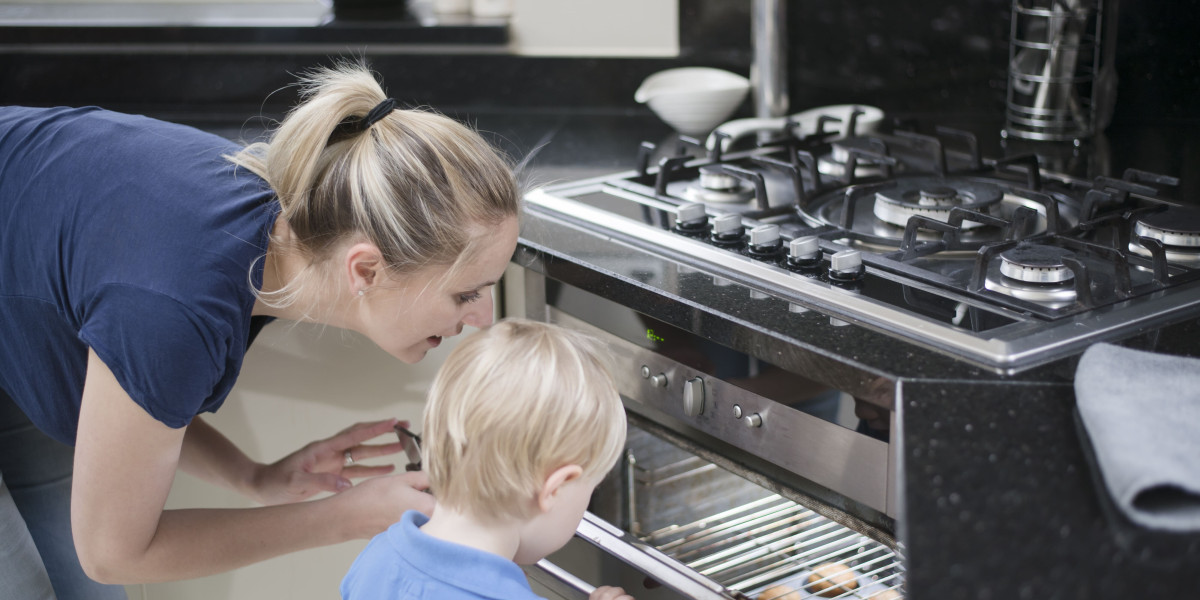The Comprehensive Guide to Built-In Cookers and Hobs
Built-in cookers and hobs have actually become increasingly popular in modern kitchen areas, supplying both performance and aesthetic appeal. These integrated appliances, developed to fit seamlessly into kitchen with built in oven cabinets, maximize area while enhancing the cooking experience. This article will explore the various types of built-in cookers and hobs, their benefits, maintenance pointers, and frequently asked questions.

Understanding Built-In Cookers and Hobs
Built-in cookers generally include ovens, while hobs refer to the cooking surface that can incorporate different heating elements such as gas burners, electric coils, or induction zones. When integrated ovens and hobs, these two appliances produce an effective and streamlined cooking setup.
Kinds Of Built-In Cookers and Hobs
When choosing a built-in cooker and hob, it's necessary to comprehend the different types readily available. Here's a detailed table comparing the primary types:
| Type | Description | Pros | Cons |
|---|---|---|---|
| Gas Hob | Uses gas as a fuel source. | Quick heat change, cooking control. | Needs gas line setup. |
| Electric Hob | Utilizes electric coils or strong plate heating. | Normally less costly, simple to clean. | Slower to heat and cool down. |
| Induction Hob | Uses electro-magnetic energy for cooking. | Quick heating, energy-efficient, safe. | Expensive, requires suitable pots and pans. |
| Built-In Oven | Can be electric, gas, or mix. | Versatile cooking options, different sizes. | Fixed place, possible setup intricacy. |
Advantages of Built-In Cookers and Hobs
Space-Saving Design: Built-in units save space by incorporating seamlessly into the kitchen layout, leaving more space for storage and counter tops.
Visual Appeal: They supply a streamlined and contemporary appearance, elevating the design of any kitchen.
Customization: With many designs and setups, property owners can choose appliances that best match their cooking practices and kitchen measurements.
Boosted Functionality: Built-in cookers frequently include advanced features such as self-cleaning options, numerous cooking modes, and programmable timers.
Safety Features: Modern hobs integrate features like automatic shut-off and kid locks, boosting security in the kitchen.
Maintenance Tips for Built-In Cookers and Hobs
To guarantee the durability and optimum efficiency of built-in cookers and hobs, appropriate maintenance is vital. Below are important upkeep pointers:
Regular Cleaning: Wipe spills and spots immediately to prevent them from hardening or ending up being more difficult to clean up.
Usage Appropriate Cleaning Supplies: Avoid abrasive products that can scratch surfaces. Usage cleaner specifically designed for the type of device you have.
Inspect Gas and Electrical Connections: Regular assessments can prevent leakages and guarantee optimum efficiency.
Calibrate Temperature Settings: If you see disparities in cooking temperatures, think about recalibrating the oven.
Schedule Professional Servicing: Annual check-ups can assist determine and rectify small concerns before they escalate.
Choosing the Right Built-In Cooker and Hob
When choosing a built-in cooker and hob, several factors must be thought about:
1. Cooking Preferences:
- If you enjoy fast temperature level adjustments, a gas hob might be ideal.
- For energy effectiveness and consistent cooking, induction hobs are preferred.
2. Kitchen Size:
- Consider the area readily available for setup. Step cabinets and other appliances to make sure the chosen system fits easily.
3. Style and Design:
- Opt for designs that match your kitchen's decoration. Built-in units been available in numerous surfaces, such as stainless steel, black, or customized cabinets.
4. Spending plan:
- Establish a spending plan that consider purchase costs, setup fees, and long-lasting operating costs.
5. Brand Reputation:
- Research trustworthy brands understood for reliability and customer care. Reading evaluations and seeking suggestions can also be handy.
Frequently Asked Questions (FAQs)
Q1: Are built-in cookers and hobs more expensive than conventional units?A1: Generally, built-in cookers and hobs can be more costly upfront due to installation and style. Nevertheless, they may provide long-lasting savings through energy performance.
Q2: Can I install a built-in cooker or hob myself?A2: While some might be installed by property owners, it is often advised to hire an expert, especially for gas or complex electrical connections, to ensure safety and compliance with regional codes.
Q3: What is the average life expectancy of built-in cookers and ovensandhobs hobs?A3: With proper care, built-in cookers and hobs can last anywhere from 10 to 15 years. Routine upkeep can extend their life.
Q4: Is it possible to integrate various kinds of hobs with the exact same oven?A4: Yes, numerous kitchen areas feature a mix of hobs (e.g., gas and induction) alongside a built-in oven, enabling versatile cooking options.

Q5: How do I know if my hob is energy-efficient?A5: Look for energy effectiveness rankings and consider induction hobs, which usually use exceptional energy efficiency compared to gas or standard electric hobs.
Hisense Extra Large Built-In Electric Double Oven cookers and hobs use a mix of contemporary style and advanced cooking technology, enhancing any kitchen's functionality and design. By comprehending the different types available, their advantages, and upkeep needs, house owners can make educated choices when purchasing these vital kitchen appliances. With appropriate choice and care, built-in cookers and hobs can provide years of satisfying cooking and a seamless kitchen experience.








